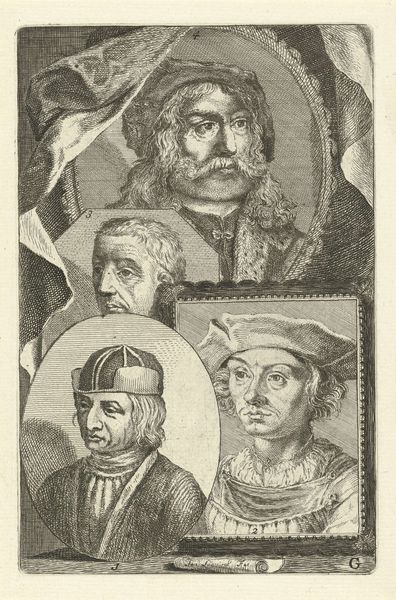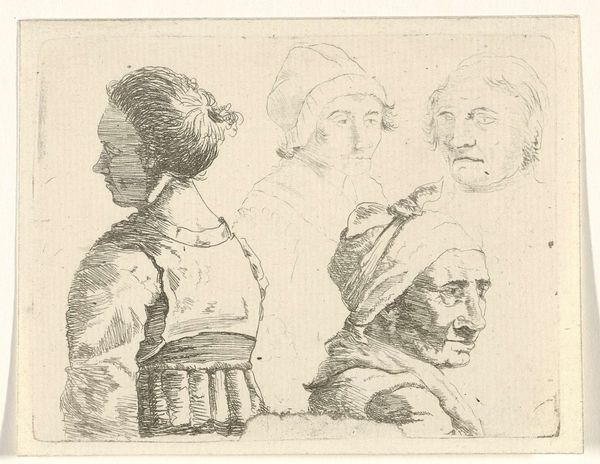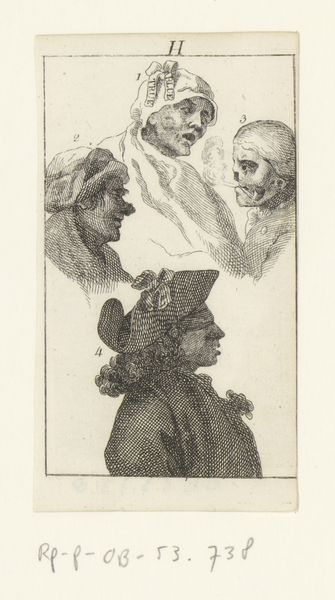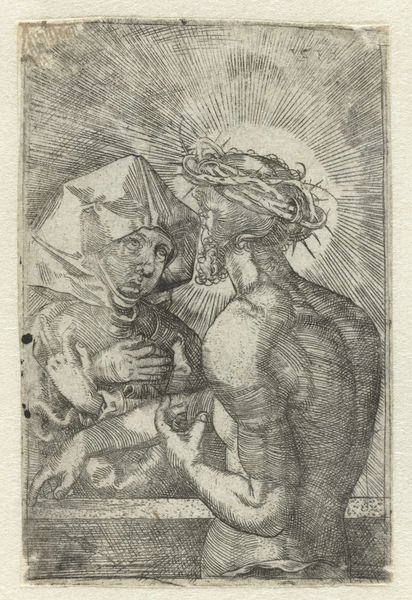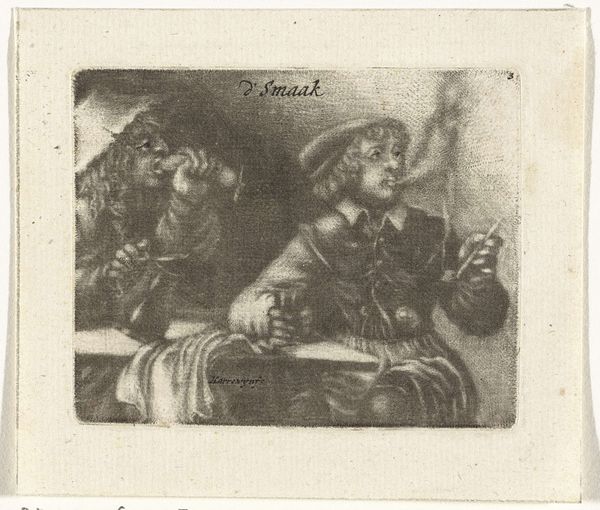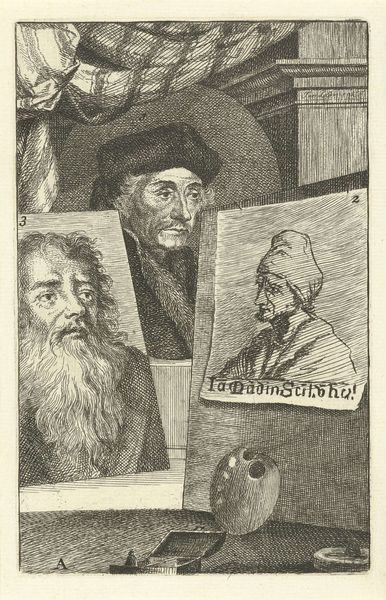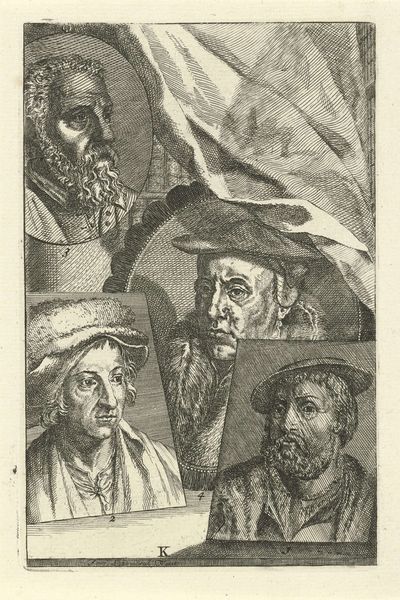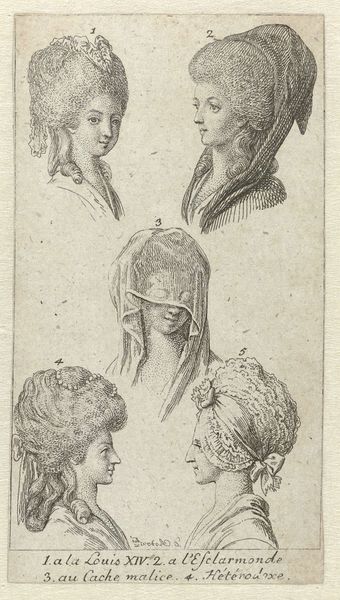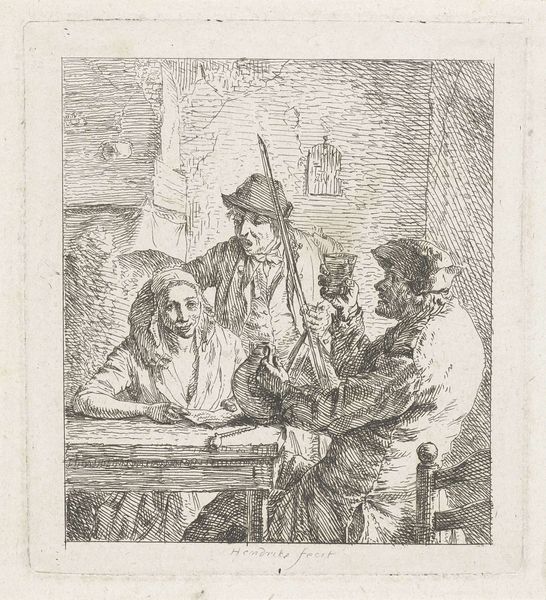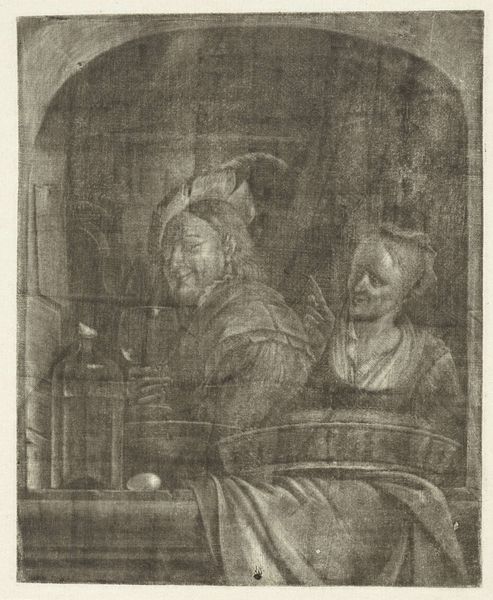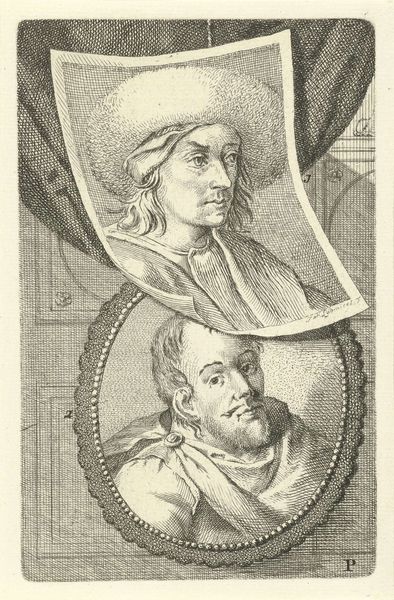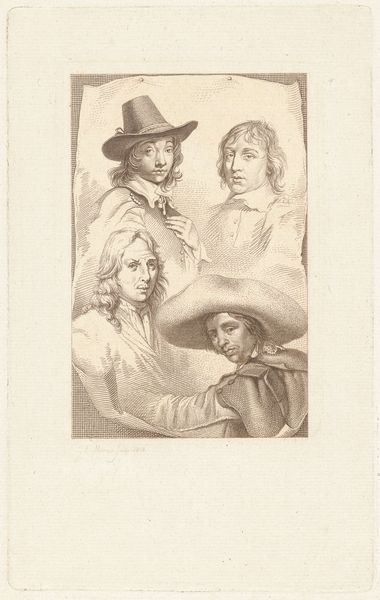
Dimensions: height 157 mm, width 109 mm
Copyright: Rijks Museum: Open Domain
Curator: This engraving from 1764, by Jan l’ Admiral, titled “Portretten van Hugo Jacobsz., Jan Massijs en Lucas Cornelisz. Kunst,” depicts, well, portraits of Hugo Jacobsz., Jan Massijs, and Lucas Cornelisz. Kunst. Editor: It has this dream-like quality, like rifling through old papers in a dusty attic. The sharp lines of the engraving, combined with the aged paper feel, really evoke a sense of history peering back at us. Curator: Precisely! Admiral has layered the images. Three portraits of artists presented as though they're propped up on a chessboard floor, framed by a theatrical curtain backdrop. It’s a performance of artistry. The print itself becomes another layer of representation on top of these historical portraits. Editor: I am curious to know how Admiral chose these three specific artists. Is there something that ties them together beyond simply being artists? What conversation is the artist having about art in his time? Curator: Jan Massijs and Lucas Cornelisz. Kunst were both Renaissance painters active in the 16th century in Antwerp and Leiden, respectively. Hugo Jacobsz. also called Hugo Woutersz, was a printmaker also active in the 16th century, and also in Holland. He, therefore, puts three 16th-century Holland artists together. The image almost seems to claim that this piece functions to keep their art "alive," because who knows if we'd remember them as vividly otherwise. Editor: The print has this quality about memory. Each portrait feels both present and like a specter. Curator: Right. The material of the engraving gives it that ephemeral touch, that these aren’t static, rock-solid images. What really strikes me, and maybe speaks to that ephemerality, is how this was made nearly 200 years after the death of two artists in this picture, Lucas and Hugo. Massijs himself was more contemporary, at least closer to the time the print was made. Editor: That span really makes you consider legacy, and how artists want to be seen or remembered. And the level of curation—a print *about* portraits of other artists! It’s layers of interpretation stacked on interpretation. Curator: Well, in a way, all portraiture participates in that layering. There is always this act of preservation taking place in them. Editor: Very true! Curator: Looking at it now, I realize how much this engraving highlights art as a conversation across time. Editor: Absolutely, like echoes bouncing through galleries. The history lives, recreated and reinterpreted.
Comments
No comments
Be the first to comment and join the conversation on the ultimate creative platform.

